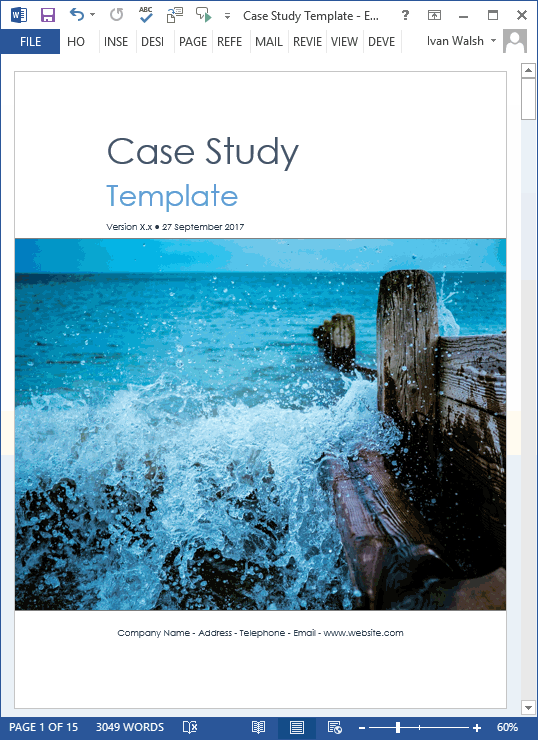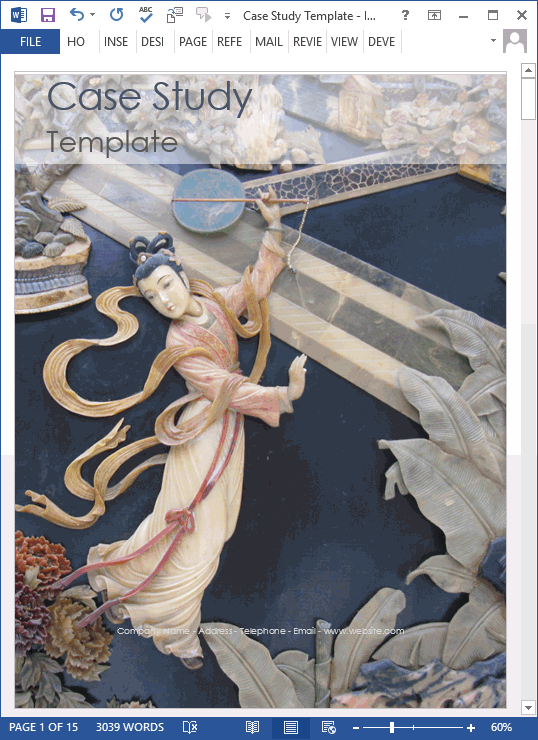Case Study Templates, Google Gemini
How to Write B2B Case Studies
Case studies are an effective B2B promotional tool especially when your products and services are intangible, expensive, highly technical or provide benefits that are not instantaneously derived upon purchase.
Supporting marketing collateral that tells the stories of other customers’ experiences with what you are selling are often useful to share with prospects during the sales process.
Using Case Studies For B2B Marketing
Case studies are a powerful way to promote the benefits of a product or service. A good case study follows a specific formula that will optimize its effectiveness.
Learn more about these templates
If you have been asked to write a case study, and you have little experience in this area, the following guide will help you write your case study.
Case Study – Where To Begin?
Write your case study to show the reader a certain perspective.
- You do not just want to tell them something.
- You want to demonstrate it so that the benefits become tangible in their mind.
- Highlight how a specific situation was initially identified, which solution was selected to resolve the issue, and a summary of the final results.
- Many case studies tend to be short, around 300-500 words.
- Aim for three pages, and include one graphic per page at most.
An image can be effective as it balances out the text. Avoid using more than one graphic, as you may clutter the message and run the risk of making the case study seem like a hard-sell.
Case Study Title
In your case study title you should include a benefit of the product or service. Instead of writing Technology Case Study, say Case Study on How X Improved Sales by Y. This way you will grab the reader’s attention from the start.
Case Study Structure
This includes three sections:
- the situation (or problem),
- the solution (or implementation) and
- the results (or future forecast).
The opening section that outlines the situation or problem being faced should carry a punch. This section has to discuss some sort of pain or problem that the reader can relate to. Next you should demonstrate how your product or service resolved a critical business issue. What you are saying in this section is that if the reader chooses your product or service their situation or problem can also be resolve.
Case Study Topic
The more specific the case study, the more effective it will be. Concentrate on how the main topic of the case study-the solution or service-addresses a specific issue. The case study is built around this single issue, so make sure to fine-tune and highlight this to the reader. Do not dilute the case study by addressing more than one issue.
Data & Statistics
Explain how your product or service can solve the problem in measurable and quantifiable terms.
Where possible, support your case study with statistics, figures and tables. Mention the measured Return On Investment (ROI) and explain how the investment in your product/service pays for itself.
Demonstrate how you can substantiate this; otherwise, your argument loses credibility. If possible, discuss how the solution can help contain costs.
This area is very important, as budgets are always a sensitive issue to businesses. If you can illustrate through numbers how a similar company saved a certain amount of money by adopting your product or service, you’ll certainly capture the reader’s attention.
To reduce barriers, demonstrate how your solution improves operations. Show how it fits into the business process. Mention how your system plugs into other applications or expensive business critical applications. Make sure the statistics stand out so that the reader can easily digest them and then remember them later on.
Artistic Case Study (Chinese Dream of the Red Chamber)
Learn more about these templates
Enhancing Your Case Study with ChatGPT
The next step is to see how you can use ChatGPT (or Google Gemini) to improve your case study.
Before we start, the point is not to write your case study with AI, rather to use it in a collaborative fashion. If you use AI tools for collaboration, in particular in the initial discovery phase, you’ll create a more rounded, informative, and interesting document for your readers.
Here’s a suggested approach to use AI when writing not only case studies, but also for proposal development, white papers, and business planning.
- Generating Ideas: Use ChatGPT to brainstorm angles and approaches for your case study. It can help generate a list of potential customer stories and angles to explore.
- Drafting Content: ChatGPT can assist in drafting the initial content. Use prompts (instructions) to provide it with the key points and data. It will use this to help you structure the narrative, ensuring clarity and coherence.
- Refining Language: Use ChatGPT to refine the language, ensuring the case study is professional and engaging. It can help eliminate jargon and make complex technical information accessible. You can remind it to edit your document according to a specific style guide, such as the Oxford or Chicago, or even Microsoft Style Guide for Technical Publications.
- Storytelling Techniques: ChatGPT can suggest storytelling techniques, such as using a narrative arc to make the case study more engaging. It can help create a compelling story with a clear beginning, middle, and end. If this area is new to you, ask it to explain these techniques to you. Prompt it to give examples that could be a good fit for your case study.
- Visuals Illustrations: Get suggestions from ChatGPT on effective use of visuals. It can recommend data visualization techniques and design tips to enhance readability and impact. If you have the premium version of ChatGPT or Gemini, it will create these for you. You can also use other AI image tools, such as DALLE, Leonardo.AI, and Microsoft Bing.
Long-term rewards
Use your judgment when compiling the final case study document. Avoid making it too technical or overloading it with excessive statistics. A case study should be an easy read, so ensure you are not making your explanation unnecessarily complicated.
The long-term reward of writing an impressive case study is that it stands out. Decision-makers will use them as a reference. Your case study will be seen as a credible and reliable source of information, making decision-makers think that your company is one they want to do business with.
The Finer Points
As mentioned above, I’d suggest you look at integrating ChatGPT for content generation and editorial refinement. One advantage of using AI is that it forces you to raise your game, so to speak, when drafting marketing material. It’s impartial. If you ask for feedback, it’ll critique your material and provide actionable feedback. What do you have to lose?
Let’s sum up. We’ve presented a framework to write more compelling case studies. Since the initial draft of this document, ChatGPT and other LLMs have arrived. These offer a sophisticated toolkit to improve different aspects of your writing. If you’re interested in learning more about this, I’d encourage you read the ChatGPT and Google Gemini tutorials on Klariti and sign up for our newsletter. That way, you won’t miss the next article on AI writing.




